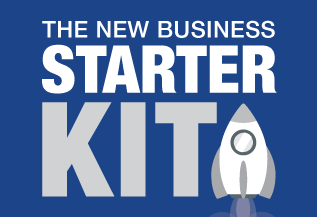How Australian businesses can maximise tax efficiency in 2023-24
Your guide to EOFY tax planning and minimisation
Take the critical opportunity to minimise liabilities.
The EOFY brings a crucial opportunity to optimise tax strategies and minimise liabilities.
As we face uncertain economic conditions and changing tax laws, effective tax planning is critical to enable your business to navigate challenges, seize opportunities, and maximise their financial position.
As part of end-of-financial-year tax planning and minimisation for Australian businesses, accountants play a pivotal role in helping businesses save money and maximise their tax efficiency. By implementing effective tax planning techniques in keeping with the intricacies of tax laws, businesses can:
- optimise their cash flow
- minimise their tax liabilities
- position themselves for long-term success.
Why is End-of-Financial-Year Tax Planning so important?Taxation is complex and ever changing – it’s critical for businesses to stay informed, adapt to regulatory changes, and capitalise on available incentives.
|
Bigger picture strategies for minimising tax at EOFY
Keep accurate records
An easy one to ignore, how is your record keeping going to impact your tax?
Without accurate and organised financial records – diligently recording income, expenses, receipts, and invoices – businesses can accurately determine their financial position and identify potential deductions. A comprehensive record-keeping system ensures compliance as well as a clear overview of business operations that makes it easier to identify where tax savings can be made.
Dig deeper into deduction optimisation
Businesses can optimise their tax position by taking advantage of deductions including operating expenses such as office supplies, rent, utilities, and marketing costs.
Get the timing right of income and expenses
Strategically timing income and expenses is a powerful way to optimise tax outcomes. Your options may include deferring income to the following financial year or accelerating expenses to reduce their taxable income in the current financial year.
This strategy is particularly relevant for businesses employing the cash accounting method, as income is recognised when received, and expenses are recognised when paid. For businesses utilising the accrual accounting method, careful consideration of revenue recognition and prepayments can also result in tax savings. Collaborating with accountants helps businesses understand the potential impact of timing decisions on their tax position and ensures compliance with relevant regulations.
See what’s on the table for business
The Australian Taxation Office (ATO) offers several tax concessions specifically designed to support small businesses. Talk to your accountant for expert advice on eligibility criteria and application for any concessions.
Check your structure is serving you
Strategic structuring or restructuring may optimise tax outcomes and enhance overall financial efficiency. For example, a family trust can allow for distributing income to beneficiaries with lower tax rates. Ask an accountant with tax planning and business structure expertise for a review of your structure.
Get specific: 10 example tax minimisation strategies for Australian businesses
Here are ten key strategies that businesses can consider during end-of-financial-year tax planning:
- Utilise small business CGT concessions: Take advantage of the capital gains tax concessions available to small businesses, such as the 15-year exemption, retirement exemption, and small business rollover relief.
- Explore research and development (R&D) Tax Incentives: Investigate eligibility for R&D tax incentives, which offer tax offsets or cash refunds for eligible R&D activities.
- Maximise deductible expenses: Ensure all eligible business expenses, such as marketing, training, and professional fees, are claimed to reduce taxable income.
- Superannuation strategies: Consider making additional superannuation contributions for eligible employees, which can provide tax benefits and help meet retirement savings obligations.
- Instant asset write-off: Take advantage of the instant asset write-off scheme to immediately deduct the full value of eligible assets purchased for business use.
- Depreciation and capital allowances: Ensure accurate depreciation calculations and claim capital allowances for eligible assets over their useful life to maximise deductions.
- Prepay expenses: Consider prepaying deductible expenses, such as rent, subscriptions, or insurance, before the end of the financial year to bring forward deductions.
- Stock valuation: Evaluate stock valuation methods and choose the most tax-effective approach, such as the simplified trading stock rules, to optimise reporting and minimise tax liabilities.
- Charitable contributions: Explore opportunities to make deductible donations to eligible charities, benefiting both the community and reducing taxable income.\
- Carry forward losses: Utilise carried forward tax losses from previous financial years to offset taxable income, reducing the overall tax liability.
Every business has an individual and nuanced tax and financial profile. It's important to note that the suitability of these strategies may vary depending on individual business circumstances. Seeking professional advice from expert accountants is crucial to ensure compliance and to benefit from these strategies.














